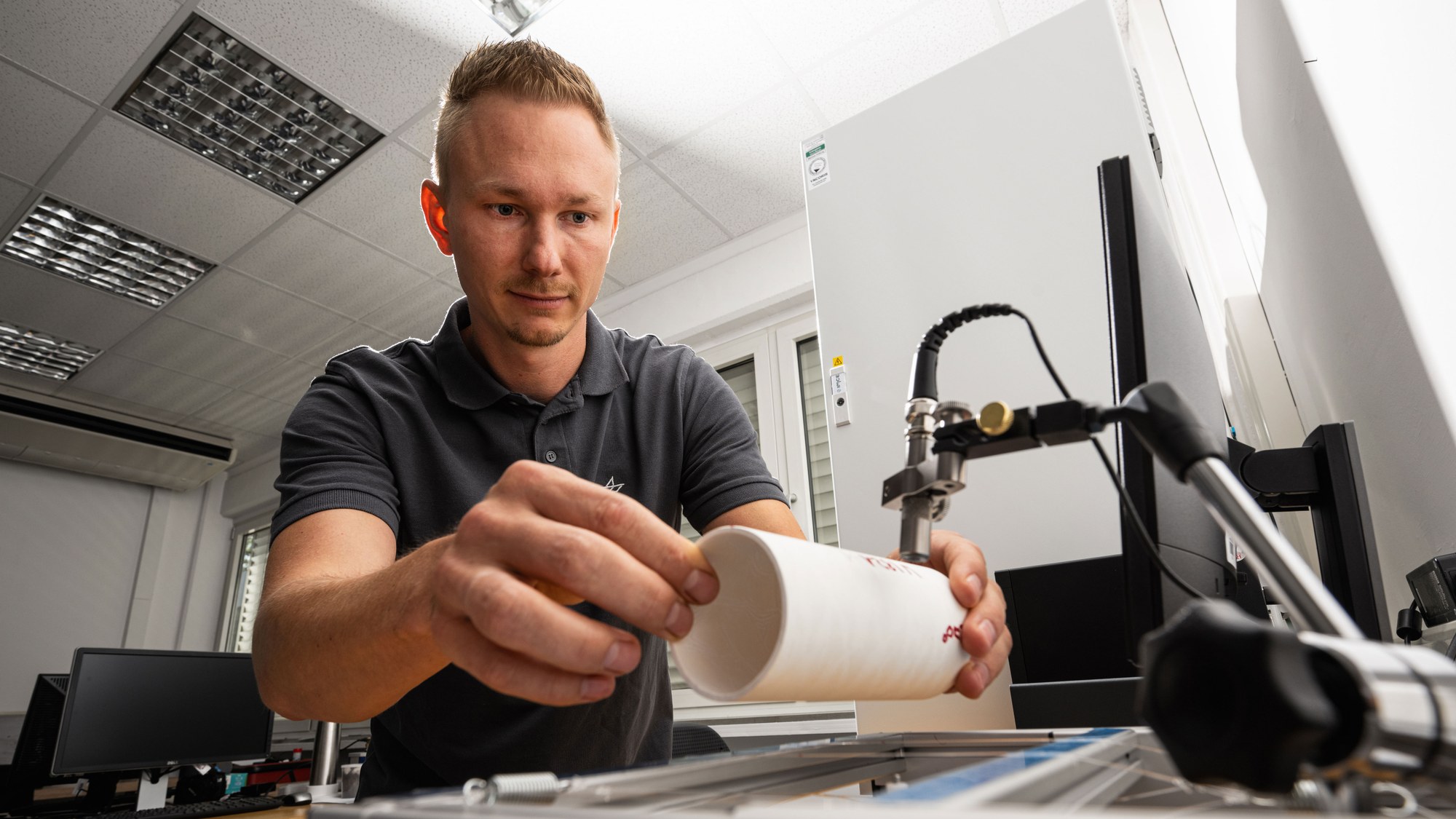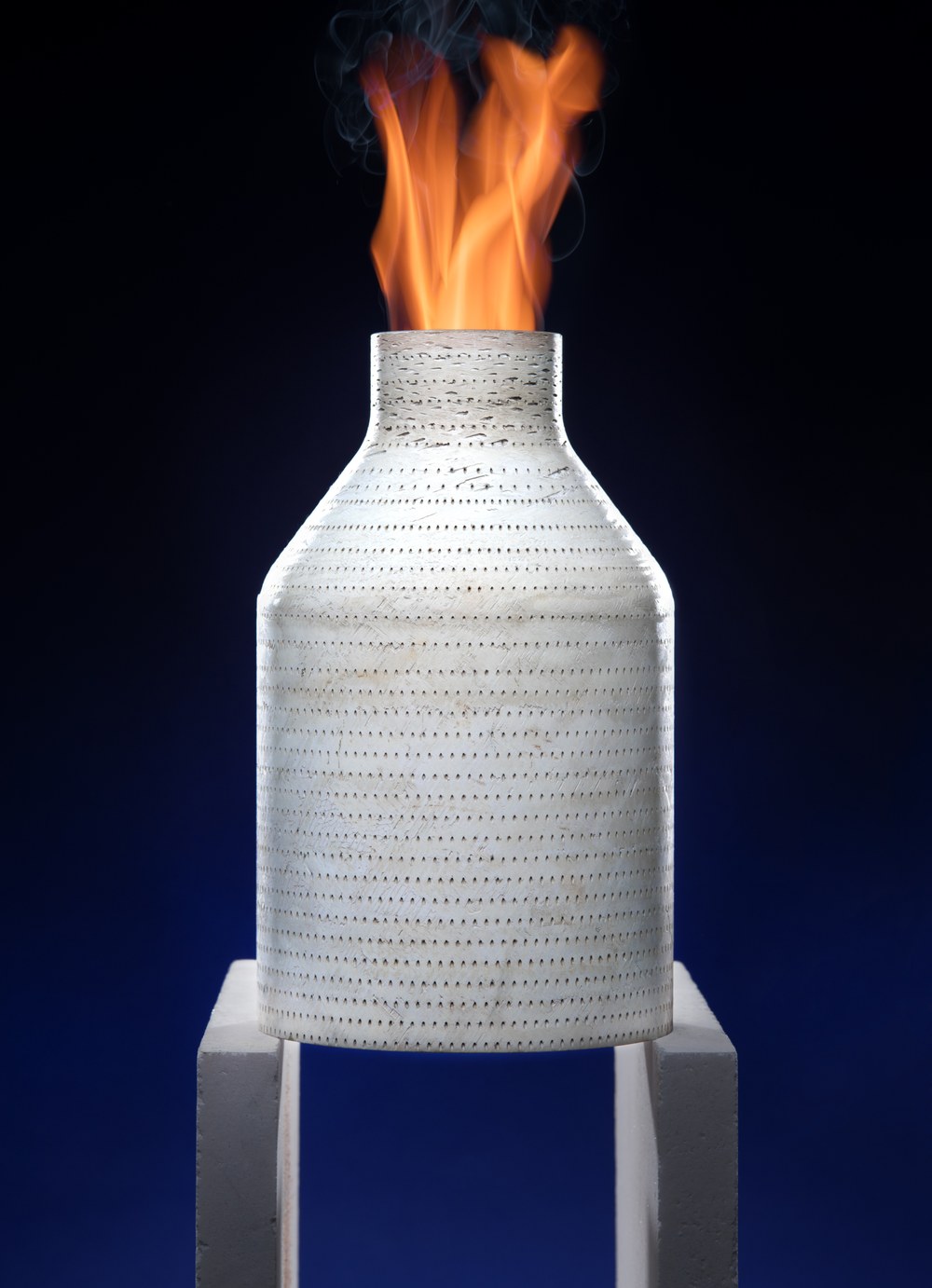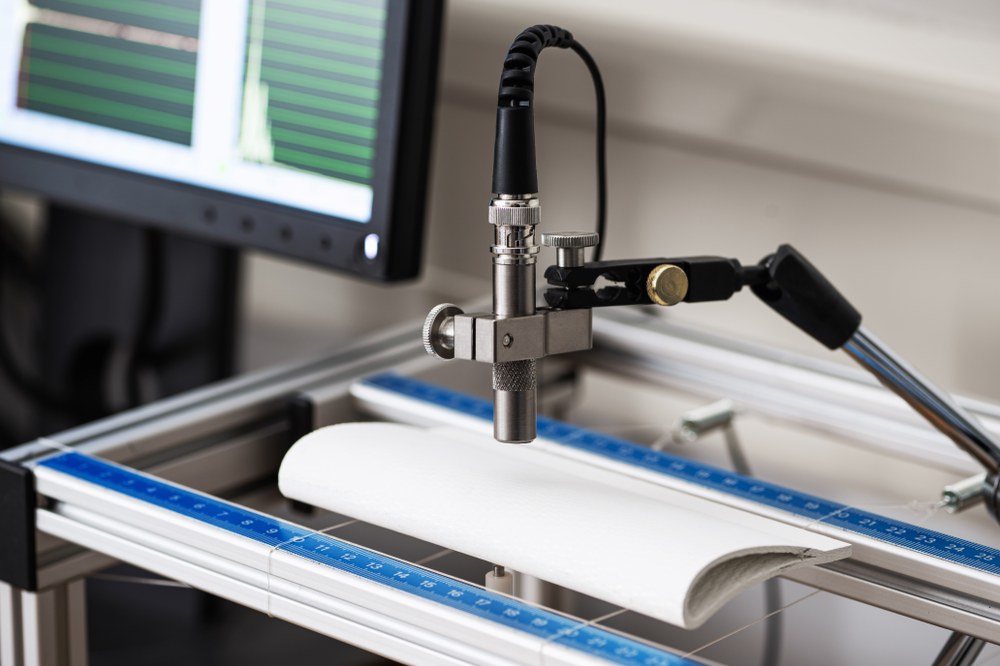Tuning in

When materials are exposed to stress and strain or harbour small defects, their sound changes. Tensile- and compressive stress also influences the vibration behaviour of materials. This phenomenon is used, for example, when strumming a guitar. Even in ancient times, potters would use a sound test after firing their clay vessels – damaged vessels produced a duller sound. Today, sound is still used to inspect the quality of clay or porcelain in industrial series production and to quickly identify damaged components. What is more, researchers at the DLR Institute of Materials Research are also using this method to develop new high-performance materials for aviation, spaceflight and the energy sector.
"Until now, we always had to test our materials to destruction to determine whether their load-bearing capacity had changed. Since these materials are used in a wide temperature range, a large number of samples had to be tested, which was a time-consuming and expensive process. With the non-destructive acoustic test, this is no longer necessary," says Jan Roßdeutscher, a researcher at the DLR Institute of Materials Research, describing the process.
Stability, even at high temperatures
Fibre-reinforced ceramic components are used, for example, in high-temperature combustion chambers. Conventional combustion chambers made of metal alloys have a temperature capability of approximately 1200 degrees Celsius. Combustion chambers made of fibre ceramics are far more resistant to high temperatures, which is beneficial for the combustion process, and allows them to run more cleanly and efficiently. Due to their fibre-based structure, these ceramics are less fragile than their well-known cousins in tile form, although they have a similar level of hardness.
The sound of materials
With the impulse excitation technique, material samples can be examined in a temperature range from room temperature to 1600 degrees Celsius. During these tests, the sample is placed in the apparatus, where it is tapped with a small projectile. A microphone records the resulting vibrations. Roßdeutscher's team uses the recording to determine both the resonance frequency of the sample and its damping – in other words, the extent to which it transmits the vibration energy. The measurement curves recorded provide information about how the material behaves during use, and if necessary, how it will change under different circumstances.
The researchers can also identify possible material transformation effects, such as the sintering of ceramics and chemical reactions occurring in the material. "We save an enormous amount of time and materials in contrast to the tensile test we have been using up to now. We no longer have to examine a new material sample for each temperature, but can record any number of measuring points with one sample. This enables us to better describe temperature-dependent behaviour of the materials," adds Roßdeutscher.
"We save an enormous amount of time and materials in contrast to the tensile test we have been using up to now. We no longer have to examine a new material sample for each temperature, but can record any number of measuring points with one sample."
Jan Roßdeutscher, DLR Institute of Materials Research
The researchers are currently using the impulse excitation technique to determine the properties of materials. These are important in order to be able to realistically simulate and design larger components to be manufactured using those materials. With the results of the acoustic test, fibre-composite ceramics can be produced more efficiently and economically, as scientists can check the quality at each individual production step and detect defective components at an early stage.
From turbine blades to brake discs
The results are used to develop materials that are even more resistant to high temperatures, while having high strength and damage tolerance. The acoustic test also provides information on whether entire components made of fibre-reinforced composite ceramics, such as new types of turbine blades or ceramic brake discs, have weak points. The resonant frequencies of the component are determined and compared with a reference component, the properties of which are known. If the measured resonance frequencies deviate significantly from the reference, this indicates a defect.
In the future, the Institute's researchers would also like to specifically investigate production-related differences between planar and non-planar geometries. With these results, they hope to further optimise the simulation models and manufacturing echnologies for fibre-composite ceramics and thus increase their reliability and efficiency.
The DLR Institute of Materials Research
New material solutions and their respective process technologies are developed here for applications in the aerospace, energy and automotive sectors. The scientists examine metallic, hybrid and ceramic materials, develop coatings to prevent the effects of damaging environmental agents on materials, components and structures. They also research thermoelectric systems, as well as aerogels and aerogel composites. In addition, the Institute carries out mechanical material tests, and materials are analysed on a microscopic level.
An article by Michel Winand from the DLRmagazine 171



